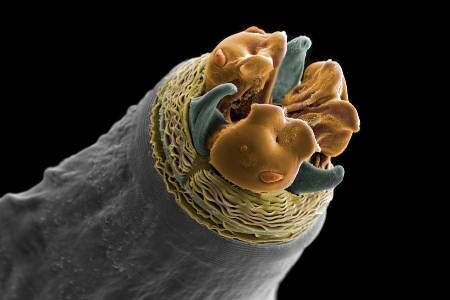When we speak of worms, we automatically conjure the image of a creepy, slimy, and disgusting crawling creature. While they do have that image, you may find it surprising to learn they play an essential role in the environment.
Another surprising thing to know is that worms are not just the creatures you find on the ground. They can even be present in living organisms as parasites.
To understand further, take a look at the list below. This article includes all the types of worms you may need to know.
Contents
Three main types of worms
In reality, there are hundreds and even thousands of types of worms. Nevertheless, the major groups in which these worms get divided are summable to three. These are the flatworms, roundworms, and segmented worms.
Let’s take a more in-depth look at each of these worm types.
Flatworms
Flatworms, also known as platyhelminth, refer to worms belonging to the phylum Platyhelminthes. It’s a group of soft-bodied invertebrates, and they usually have a flattened character.
Many flatworms are free-living. However, 80 percent of all this kind are parasitic, which means they live on or in other organisms. It also means that they get nourishment from harming their host.
Such a group includes tapeworms, flatworms, and flukes.

Roundworms
Roundworms, also known as Nematoda, are parasites living in the intestine. They are the kind that can be contagious through contact with infected stool.
Moreover, they can be present in both humans and animals. They are also transferrable through contacting infected surfaces, usually in dirt or soil.
Among the worms belonging to this group are roundworms, hookworms, and even threadworms.

Segmented worms
Segmented worms, also known as Annelida, are a large species. This type includes over 22,000 species.
The name Annelida comes from the Latin word ‘anellus,’ which translates as ‘little ring.’ Thus, many people know these worms as ringed or segmented worms.
Among the worms included in this group are ragworms, earthworms, bristle worms, and even leeches.

How to identify the type of worm
The best and quickest way to identify the type of worm is through their appearance.
The three groups of worms have a distinct appearance from each other. An easier way to look is through understanding their names.
Flatworms, from the name itself, have flattened characters in their bodies. For example, a tapeworm is one of the flatworms due to its flattened body.
From the name itself, Roundworms have a round body, making them quite identical to segmented worms. However, they do come in a straight body with no lines that indicate a segment.
Further, most roundworms have tiny sizes than the other two types, although large species belong to this group.
Lastly, segmented worms, from the name itself, have a unique build with segments in its body. These worms use such pieces when moving. They can retract and run each part to their will, depending on what is necessary.
Of course, there are other ways to know the type. However, as a beginner, appearance is the sure way to determine a particular worm group.
Related: Types of Earthworms
How many types of worms are there?
Thousands of types of worms exist in the environment. For instance, the group of segmented worms includes over 22,000 species already.
Further, the earthworms themselves, one of the segmented worms, has about 2,700 species.
Still, while there are thousands of species and varieties of worms, they roughly fall within the three main groups. These are the flatworms, roundworms, and segmented worms.
What are the different types of worms in humans?
Many types of worms can appear and cause problems in humans. Among these are threadworms, roundworms, tapeworms, whipworms, and even hookworms.
Threadworms
Threadworms are tiny parasitic worms that usually infect the large intestine.
Its infection is common throughout the UK, especially in children below the age of 10.
These worms have a white color and a thread-like appearance.

Roundworms
Roundworms are the kind that can thrive in or on humans and can cause many complications.
Usually found in soil and stool, these worms can enter through the mouth or direct contact with skin.
They can live in the intestine for quite a long time. There exist several types of roundworms, and they can all be quite dangerous.

Tapeworms
Tapeworms can infect humans through food or water with eggs or larvae of tapeworms.
If a person consumes a certain amount of eggs or larvae, the worms can migrate outside the intestines. They will then form larval cysts in body tissues and organs.

Whipworms
Humans can get whipworms through soil or water contaminated by the feces of infected animals or even other humans.
Many complications don’t show symptoms of illness. However, heavy infections can lead to gastrointestinal problems, especially in children.

Hookworms
Hookworms can affect both humans and animals. They can transfer into the human body through larvae ingestion. Most victims of hookworms are pets like cats and dogs.
However, they can also affect and harm humans. The most common effect of hookworm infection is a skin condition.

Summary
Worms exist in thousands of species and types, but they can all fall into three main groups. These are the flatworms, roundworms, or segmented worms.
The three kinds of worms are recognizable through their appearance. Flatworms come in flattened bodies, roundworms in round bodies, and segmented worms in bodies composed of several segments.
There also exists a variety of worms that can harm humans as parasitic animals.
Resources
Image credits – Canva



